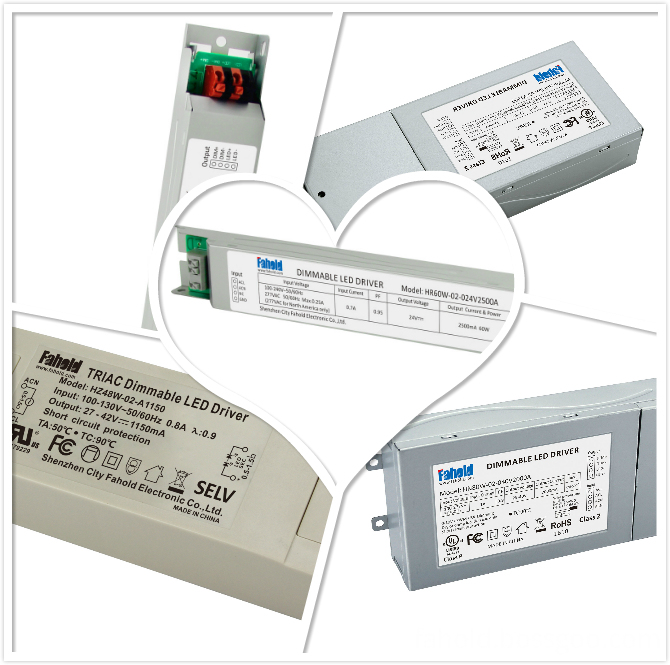The load characteristics of the LED itself greatly affect the reliability of driving it with a Switching Power Supply. The LED load characteristics, ie, volt-ampere characteristics, are diode characteristics. In a certain interval, the voltage across the LED rises, making its current growth exponential, explosive growth. Therefore, many LED lamps driven by switching power supplies exhibit many unstable characteristics. The reason is that the output of the switching power supply is not very clean and smooth DC voltage (current) energy, but a very complex energy signal, which can be roughly seen as stable.
The LED is very sensitive to the voltage change. When the LED is working under a stable current, the voltage between both ends is generally between 3.0-3.6V (the size of the power LED is slightly different). When the voltage applied to both ends of the LED fluctuates slightly, it The current at both ends will change drastically, and the output power of the power supply will also change drastically. If there is a sudden increase in the grid voltage, a small output voltage changes at this time, a large output current will be produced, and the power will suddenly increase, resulting in an accident.
Practice has proved that in the circuit, adding a variety of voltage suppression components, such as TVR, TVS, the effect is not obvious, the damage will still be damaged, the reliability of the LED drive power can not be as good as other power supplies, which is Objective facts. Although many people have said that there is no problem with their own LED power supply, it is actually pale self-comfort because he did not solve the fundamental problem.
Reliability and efficiency are mutually restrictive. High-efficiency power supplies must have reduced reliability, and reliability must be sacrificed. Power efficiency must be sacrificed. Because it is necessary to reduce the influence of the input voltage on the output voltage, the electrical energy must be converted through multiple layers. To give a simple example, the reliability of a BUCK circuit is usually not high, but the BUCK-BOOST circuit is more reliable than BUCK. This is tested by practice. Because people who know the principle of power supply all know that the BUCK circuit is switched on, the LED load and inductance are stringed in a 300V high voltage. At this time, the LED is directly powered by 300V, and the BUCK-BOOST circuit is for the inductor alone. Inrush energy, during the off period, the BUCK circuit is the inductor and then the freewheeling load, and the BUCK-BOOST circuit is turned off, the inductor will re-conduct energy to the LED load. The difference between the two is that, for a period of time, the BUCK circuit is directly powered by 300V, and the latter is first stored in an inductor, and then transfers the energy from the inductor to the LED load, so the latter has a high reliability because of its passing rotation. Long way. The long route of transmission will reduce the efficiency. Generally, the efficiency of the BUCK-BOOST circuit is 2-5 percentage points lower than that of the BUCK circuit.
Therefore, the current LED drive power supply generally has better isolation reliability than non-isolation. The reliability of low voltage is better than that of high voltage. It is under the constraints of this law, that is, the efficiency is increased, and the reliability is sacrificed. Reliability, it is necessary to reduce efficiency.
In fact, the problem is caused by the LED load characteristics, the fundamental method is to improve the LED light string load characteristics, but the method to improve the load characteristics is still a sacrifice of efficiency as a means. The easiest way to improve the load characteristics is to string resistors into the LED string. The larger the resistor string, the more stable the load characteristics. Of course, this is to reduce efficiency. There is also a good way to add a linear pressure regulator, use a transistor, and adjust the tube. The transistor is equivalent to a variable resistor. In this case, the reliability should be higher (I have theoretically derived practical experience not yet). Basically it can be argued that the most reliable LED driving method is actually: Ordinary constant voltage power supply plus linear Constant Current , of course, the efficiency is not too high. With high efficiency, reliability comes down.
Dimmable Led Driver
Dim your LED-based luminaries with our dimmable LED drivers. We have Dimmable Led Driver to function with a number of different dimmers including 0-10v, Triac, PWM and more. Power your LED Luminaries with our LED Drivers. Our LED Drivers are designed for applications such as: LED home Lighting, LED Decorative Lighting, Theatre/Stage Lighting, traffic signals, and so much more. If your LED cluster or string configurations that already include a constant driver as part of the assembly, shop our Constant Voltage LED Power Supplies .0-10v Dimmer Switch Touch Panel 2. Dali Dimmable Led Driver 3. Led Dimming Driver
- Dimmable LED driver: dimmable with TRIAC and trailing edge ELV-based dimmers
- UL8750 recognized,FCC, ClassP
- AC input: 100-277VAC (230VAC nominal version available)
- Operating temperature: -30~+90°C case temperature
- Compact plastic enclosure for integrating into most light fixtures and standard electrical junction boxes
- Mounting clips featuring installer selectable mounting locations
- 5 year warranty

Dimmable Led Driver
Dimmer Switch Touch Panel,Dali Dimmable Led Driver,Led Dimming Driver
ShenZhen Fahold Electronic Limited , https://www.fahold.com